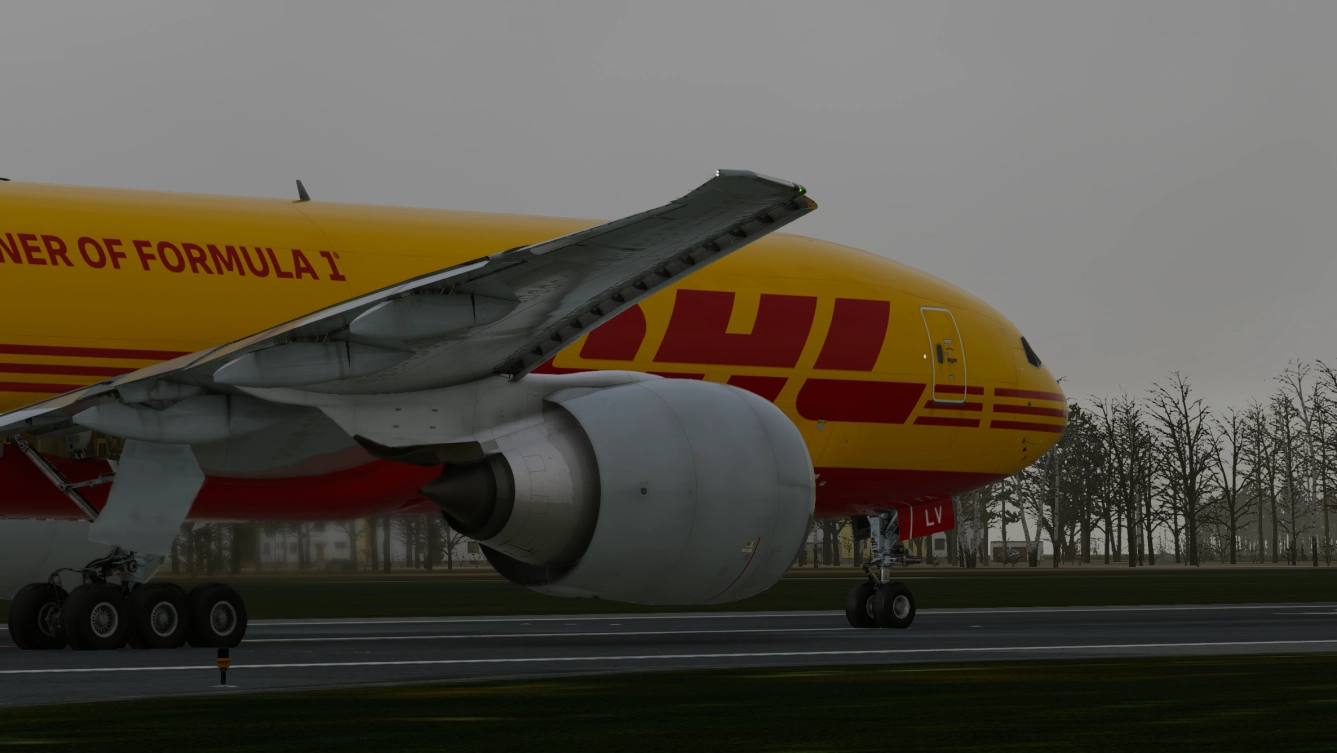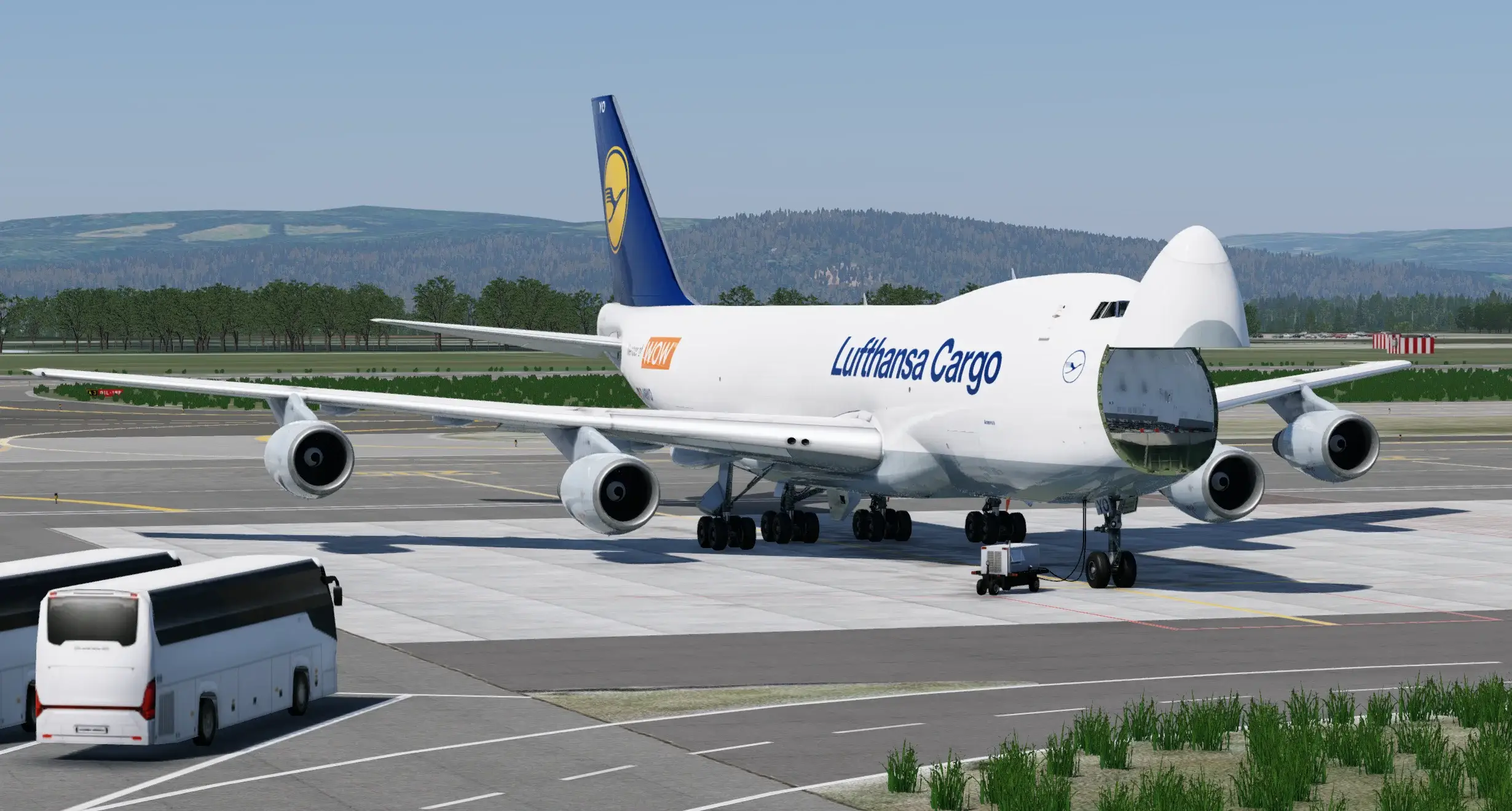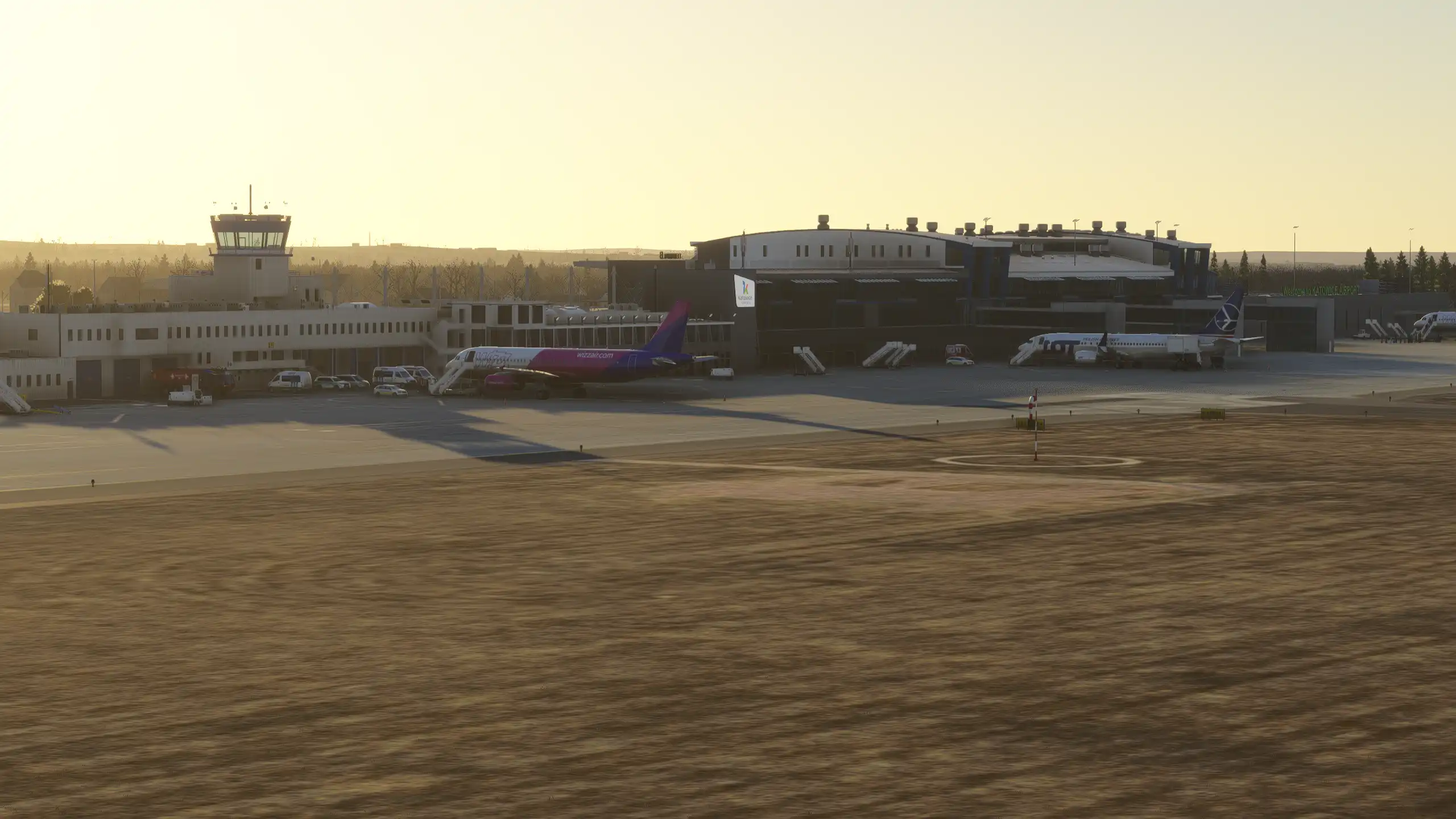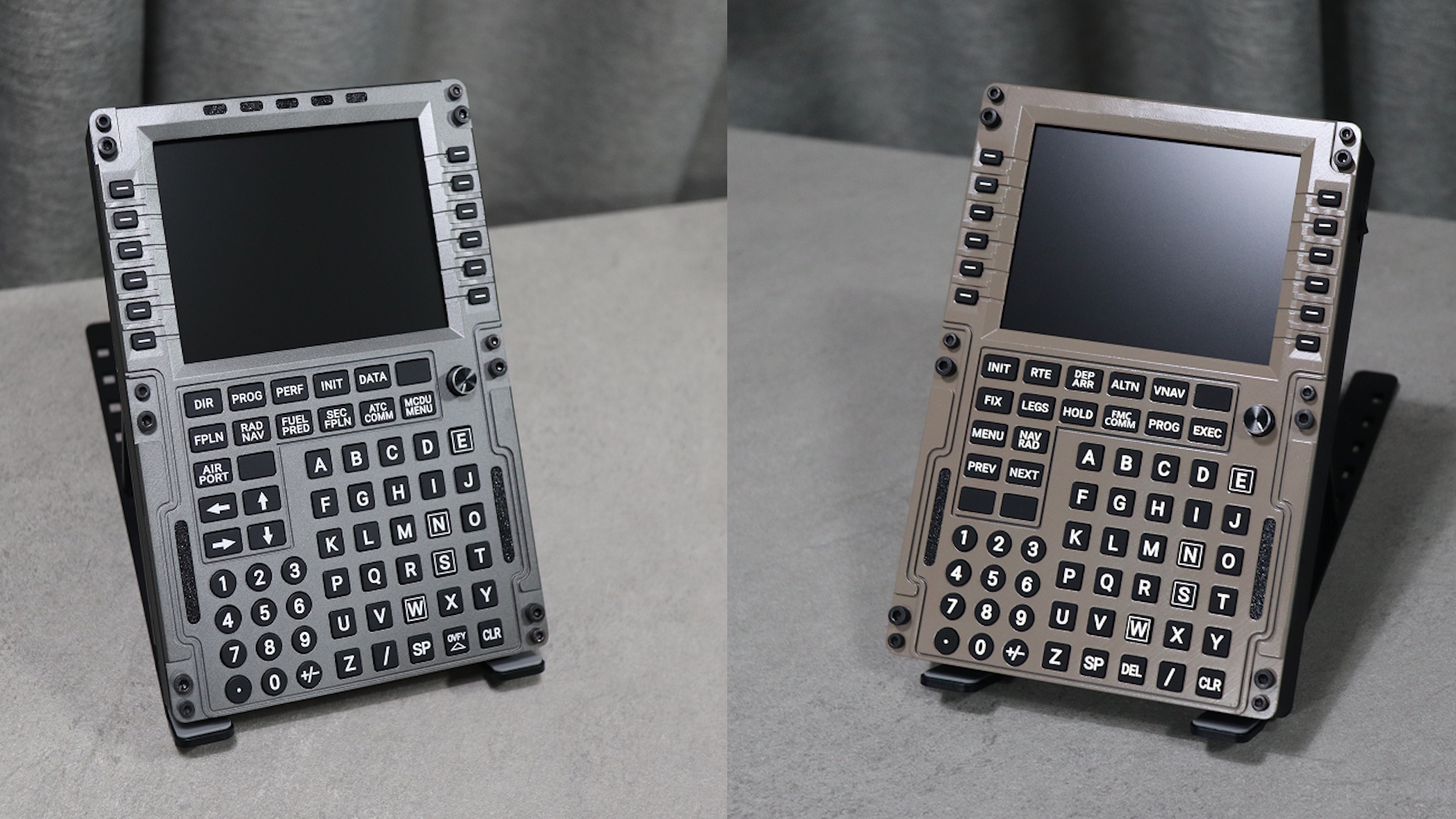Threshold Review: Drzewiecki Design’s Gdańsk Lech Wałęsa Airport for MSFS
July 9, 2023
Introduction
Gdańsk Lech Wałęsa Airport (EPGD) is an international airport serving the Tricity area in Northern Poland with a yearly average of 4.5 million passengers. It was built in the early 1970s to replace the old airport - Wrzeszcz - whose facilities were rotting (to the point they had to ban night flying because the runway lighting was no longer operational). Its site couldn’t be the same as the old airport because of limitations imposed by the urban development, forcing the authorities to choose a new area: somewhere close to the village of Rębiechowo. Wrzeszcz was closed in mid-1974 and transformed into a housing estate, with only a few bits left after all those years.


For its first 19 years, Gdańsk-Rębiechowo (as it used to be called before the fall of the Soviet Union) had a tiny terminal that couldn’t keep up with the times, especially after the Soviet collapse, leading to the construction of a new terminal in 1993. After its inauguration in 1997, Gdansk could finally start growing again, no longer limited by size constraints.
The first million passenger mark was reached almost a decade later in 2006, sparking talks of a potential expansion that would eventually happen in 2012 with the construction of Terminal 2, built according to the latest standards and trends in the industry, with 54,000 square meters of area, twenty-five check-in desks, a modern luggage sorting and transport facility, jet bridges, and lots of shops, bars, and more.
Terminal 2 was built to handle up to 7 million passengers annually. While the current yearly average has yet to be quite there, they have recently expanded it with a non-Schengen pier (completed in 2022), being able to handle up to 9 million people yearly.
It’s an important low-cost base for Ryanair and Wizz Air, flying people all over Europe. The visitors’ list includes Eurowings, Finnair, KLM, Lufthansa, Norwegian Air Shuttle, and Swiss Air Lines.
The scenery features a high-quality model of EPGD, with custom ground textures, custom jetways, performance-friendly optimization, GSX Pro compatibility, PBR materials, a high-definition ground mesh, custom night lighting, and more.
Installation
The scenery is distributed through OrbxDirect, where users can automatically install the airport and enable/disable features for better performance.
First Impressions
As usual with my scenery reviews, I like to fly into the airport from elsewhere instead of loading in and checking the scenery out, making the whole ordeal a surprise that could go either way if there is something wrong with the scenery. I like to live dangerously.

My leg of choice was a nearly 2-hour hop from London Stansted (EGSS), leaving England around 16:30 and arriving in Gdansk during the early golden hour, making it perfect for some breath-taking screenshots of my aircraft on approach and parked at the stand. The “golden hour” effect is truly one of the best visual aspects of Microsoft Flight Simulator.
Fast forward 2 hours, and it was finally time to land at Gdansk for the first time, with a very gentle headwind and the sun beaming on my windshield all the way to touchdown. It was especially noticeable during the final approach, where everything was glowing outside like someone had just dropped a nuclear bomb all over Poland.

Nuclear glow aside, I was finally face to face with runway 28, which, little did I know back then, would become my arch nemesis: it’s a bit sloped, just enough to make me land very hard for the first time in ages. If you have been following my previous reviews, you are probably aware of my troublesome relationship with pronounced slopes.
With my virtual pilot pride wholly shattered, I vacated the runway towards stand 23, where I’d park for the night and call it a day because it was pretty late. Taxiing didn’t take long as I had vacated in front of the terminal, so I had to leave all the exploration for later while deboarding (with the drone camera).

As the first - terrified - passengers left the airplane, I set on my initial journey around the airport, having my expectations instantly met. DD has been known for developing high-quality work ever since the good old days of Flight Simulator X, and his Gdansk was definitely up to the standard. The transparent and modern terminal is gorgeous in real life and just as pretty in the simulator. The interior was carefully crafted, with many different shops, animated passengers, and even ambient sound, which is still somewhat rare among most sceneries.
Modeling / Texturing
GDN is a feast for the eyes of any architectonic appreciator, connoisseur or not. Their main terminal is entirely see-through, allowing the passengers to see everything that is going on outside. DD’s rendition does justice to its magnitude and impressiveness, bringing very convincing materials to the table, allied to a carefully crafted airport interior that accurately reproduces its real-world counterpart. It’s a step up from their Prepar3d version in every regard. No compromises were made.






The high-detail standard extends to the old terminal and the landside buildings, which may seem minor but makes all the difference, making for very realistic screenshots regardless of where your airplane is up or down the taxiway. Granted, more buildings mean more to render and load in, leading to potential performance issues, which is not the case with DD’s GDN.


Drzewiecki Design went the extra mile with the landside detail, adding a very detailed train station near the airport with a functional train. The parking lot area shares the same amount of detail, with close attention to road signage, advertisement boards, and loads of - properly optimized - vehicles.







The - optional - static aircraft, something that is generally there to make us ask the VATSIM ground controller for a new gate because the one they have assigned us is taken by one of them, are superbly made, with their doors open, remote stairs attached in true LCC fashion, and 3D passengers either boarding or deboarding, making it always look busy, as an airport should. I appreciate that there’s some life to them instead of just being a bunch of parking spot takers. Then again, one can easily disable them.



The ground texture work is of a very high standard, with no square meter left behind regarding quality. Consistency is key, and they seem well aware of it.


Overall, DD’s attention to detail is easily evidenced by this scenery, with an impressive landside and an equally impressive airside. It’s pretty much faultless.
Night Lighting
The night lighting matches the overall quality of the work, internally and externally. It’s very realistic, not being either overly bright or too dark.







The landside is just as good as the airside, lighting-wise.



Performance
The overall performance is solid, with no stutters on the short final and no surprises around the terminal area. A commendable feat considering how much they managed to pack into this rendition of GDN. The developers used parallax textures on most landside buildings, making it look decent from afar without tanking the framerate. The hardware used in this review is a Ryzen 7 3700X, with 32 GB of RAM and an RTX 3080 10 GB.
Conclusion
Drzewiecki Design’s Gdansk does not disappoint. They have built a reputation for crafting fine work for every simulator they touch, and this product is no different. It’s an essential addition to everyone’s eastern european collection for the occasional Buzz or Wizz Air operations.


Retailing for roughly $20.25 on OrbxDirect, the pricing seems reasonable considering the amount of detail packed in and the care to ensure good performance despite it all.
A huge thank you to Drzewiecki Design for providing us with a review copy!
Share this page
COMMENT ADVISORY:
Threshold encourages informed discussion and debate - though this can only happen if all commenters remain civil when voicing their opinions.












